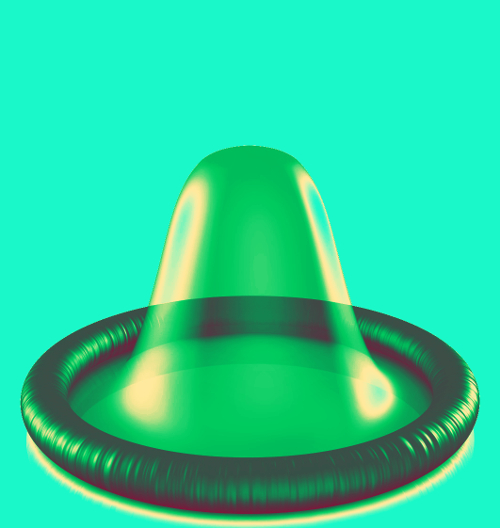Condom study could seed native grass industry
 A massive new industry could open up in Australia following research on materials for the thinnest condom ever.
A massive new industry could open up in Australia following research on materials for the thinnest condom ever.
Australian researchers have published a seminal report on the use of spinifex as a latex additive, which suggests that a substance derived from the grass could make latex condoms significantly thinner, without sacrificing any durability
Spinifex grass is a native that grows across North Queensland, and has been the subject of ongoing work by a team at the University of Queensland’s Australian Institute for Bioengineering and Nanotechnology (AIBN).
Their latest report describes a method of extracting nanocellulose from the grass for use in latex production.
“We can make a stronger and thinner membrane that is supple and flexible, which is the holy grail for natural rubber,” said UQ’s Professor Darren Martin.
Nanocellulose is a substance made up of long cellulose fibres just a few nanometres thick. But despite its slimness, nancellulose is extremely high strength, light weight, and has a range of properties that have already seen it used for new medical dressings, cleaning up oil spills or even flexible electronic displays.
Nanocellulose is extracted from harvested spinifex using a relatively simple method, says AIBN’s Dr Nasim Amiralian.
“You would firstly hedge the grass, and then it would be chopped up and pulped with sodium hydroxide – and at that stage it just looks like paper pulp,” she said.
“Then you hit it with mechanical energy to force it through a very small hole under high pressure to peel the nano-fibres apart from the pulp.”
The fibres are then suspended in water and mixed with water-based rubber latex.
The UQ team has become the first to make condoms from spinifex-reinforced latex, which were inflated on a commercial dipping line in the US to test their strength.
“On average [we] got a performance increase of 20 per cent in pressure and 40 per cent in volume compared to the commercial latex control sample,” Professor Martin said.
“With a little more refinement, we think we can engineer a latex condom that's about 30 per cent thinner, and will still pass all standards.”
The very first commercial dipping run achieved a thickness of 45 microns, or about the width of a human hair.
“With more process optimisation work, we will be able to make devices even thinner than this,” he said.
Professor Martin added that there could be other uses for spinifex-reinforced latex too, such as thinner and more sensitive surgical gloves.
The AIBN is even looking for ways to make completely natural carbon fibre, for strong, light car body panels that require no petroleum-based products.
At the start of the research project, the team from UQ signed an agreement with the Indjalandji-Dhidhanu People - the traditional owners of the Camooweal region in north-west Queensland, where large amounts of spinifex grow.
The deal gave the academics access to the local Aboriginal traditional owners' knowledge about Spinifex, and gives the Dugalunji Aboriginal Corporation (DAC) ongoing equity and involvement in the commercialisation of the technology.
The DAC says it hopes the technology will bring economic opportunities to remote areas across Australia.








 Print
Print